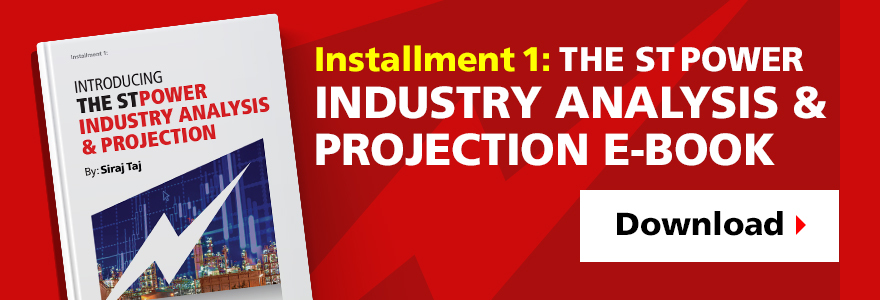If you’re a power plant owner, you should know.
“Asset performance management is a cross-functional initiative requiring key stakeholders with varied business objectives to join minds under a shared objective.”
Global power market fundamentals are changing rapidly, and there is a growing demand for clean, efficient, and reliable power generation sources. The effects of the changing market are not limited to traditional power producers either. These changes are affecting how power is produced, distributed and consumed, encapsulating the entire power production value chain. Renewables, distributed energy resources (DER), smart grid technologies, digital transformation, growth of the Internet of Things (IoT), big data, advanced analytics, APM tools and other factors are forcing traditional utilities and power to reinvent themselves. Recent studies suggest U.S. electric utilities and plant owners have a huge opportunity to cut significant operating costs and optimize asset performance by adopting new technologies and processes.
The growth of IoT and advanced analytics have created a demand for Asset Performance Management tools. APM enables plant owners to optimize their power generating assets by implementing key functionalities like condition-based maintenance (CBM), reliability centered maintenance (RCM), and asset deployment strategies. APM provides tools to asset managers for developing business models based on the current condition of an asset and performance data to ensure maximum improvements in operational reliability, an increased capacity factor, reduced O&M costs and the biggest ROI.
The jury is still out on the best way to deploy and assess APM’s true value. This is because APM’s true value heavily depends on organization readiness and willingness to embrace change.
Asset performance management is a cross-functional initiative requiring key stakeholders with varied business objectives to join minds under a shared objective. As individual stakeholders, experiencing a true “meeting of the minds” can be prohibitive without executive oversight. Executive leadership is therefore called upon to own the initiative as a mandate and challenge stakeholders to cooperate and collaborate for the common good of the organization.
Purpose
APM enables power plant owners to strategically operate and maintain their power generating assets while delivering maximum profitability and asset lifecycle, allowing power plants to remain highly reliable in the market.
The asset performance management process works across financial and operational lines to provide real-time plant performance and insight. APM also outlines essential processes and functionalities to keep assets optimally performing as they were designed, to deliver the biggest ROI. Therefore, APM will help reduce costs, improve operational efficiencies, increase plant reliability and profitability.
Assumptions / Concerns
I. Organizational readiness: This is the most basic requirement, yet it can become a daunting challenge to the goal of successfully implementing APM. Not unlike the challenges faced by organizations deploying the Six Sigma methodology with the goal of Business Process Improvement. Technology isn’t the real obstacle when responding market fundamentals, it’s the culture of the organization, coupled with the will (or lack thereof) to change outdated policies, procedures and processes which often, stands in the way of reaping the true benefits of APM.
II. IT infrastructure: In the absence of a cohesive, corporate-wide IT landscape many power plants have developed their own IT solutions for operational needs and for measuring business performance. Optimum use of APM tools requires access to real-time financial and operational data to perform accurate asset performance analysis.
III. Aging workforce: As maturing staff moves closer to retirement, and developing staff remains inexperienced and underprepared to assume total O&M responsibility, there is a gap emerging that must be bridged.
IV. Aging technology: Most of existing power plant equipment operates under a perceived threat of obsolescence, particularly plant and electrical control systems. It has become relatively common for owners to consider upgrading perfectly working equipment simply to avoid the risk of costly disruption. On the other hand, APM technology may warrant an upgrade to plant control systems to fulfill the required compatibility for optimum use of APM tools.
V. Asset lifecycle: Since most of existing power plant equipment has a design life cycle of 25 years and has generally been operating for over 15 years, pragmatic asset lifecycle due diligence is necessary before making the significant capital investment in APM tools.


